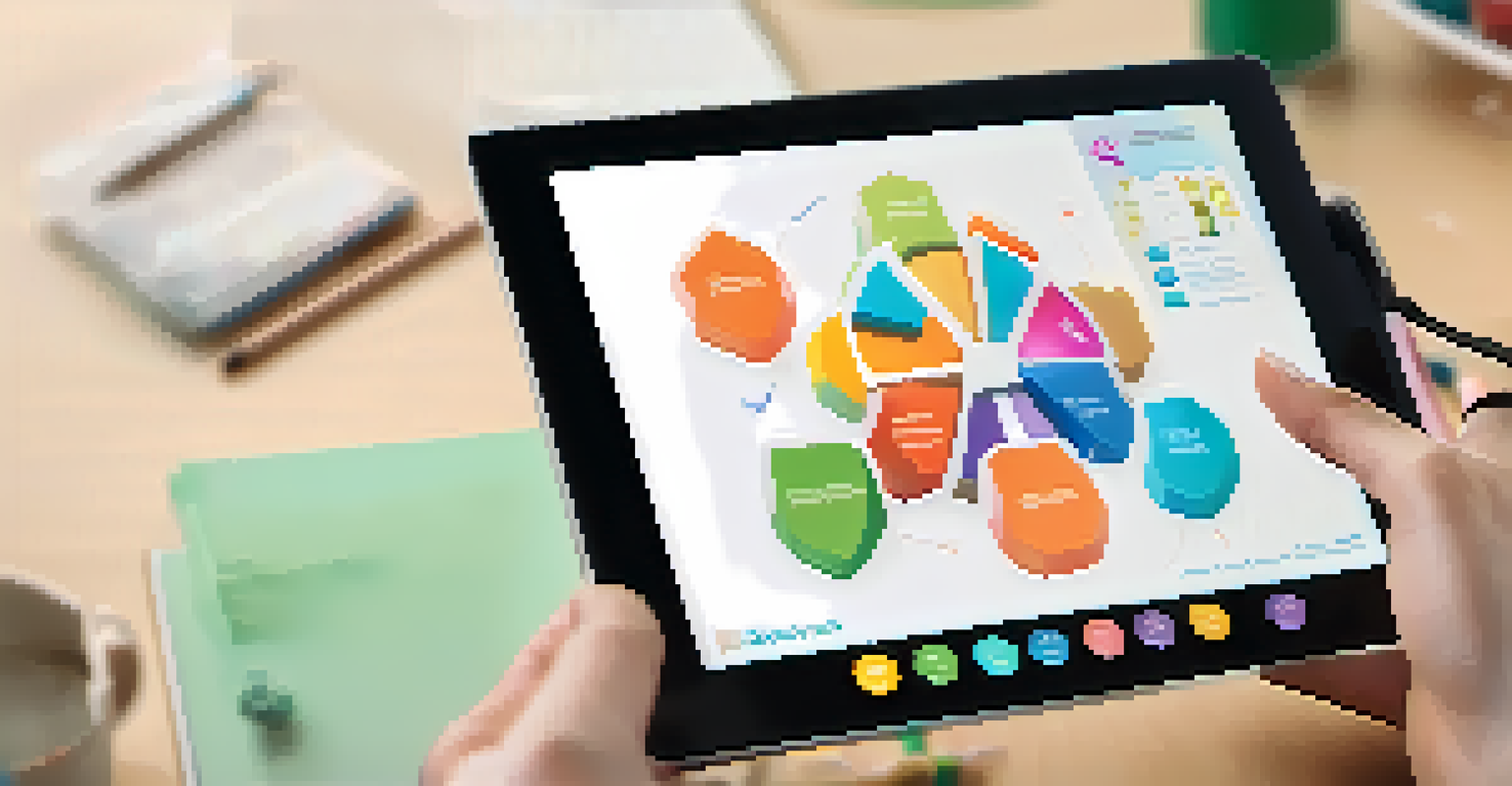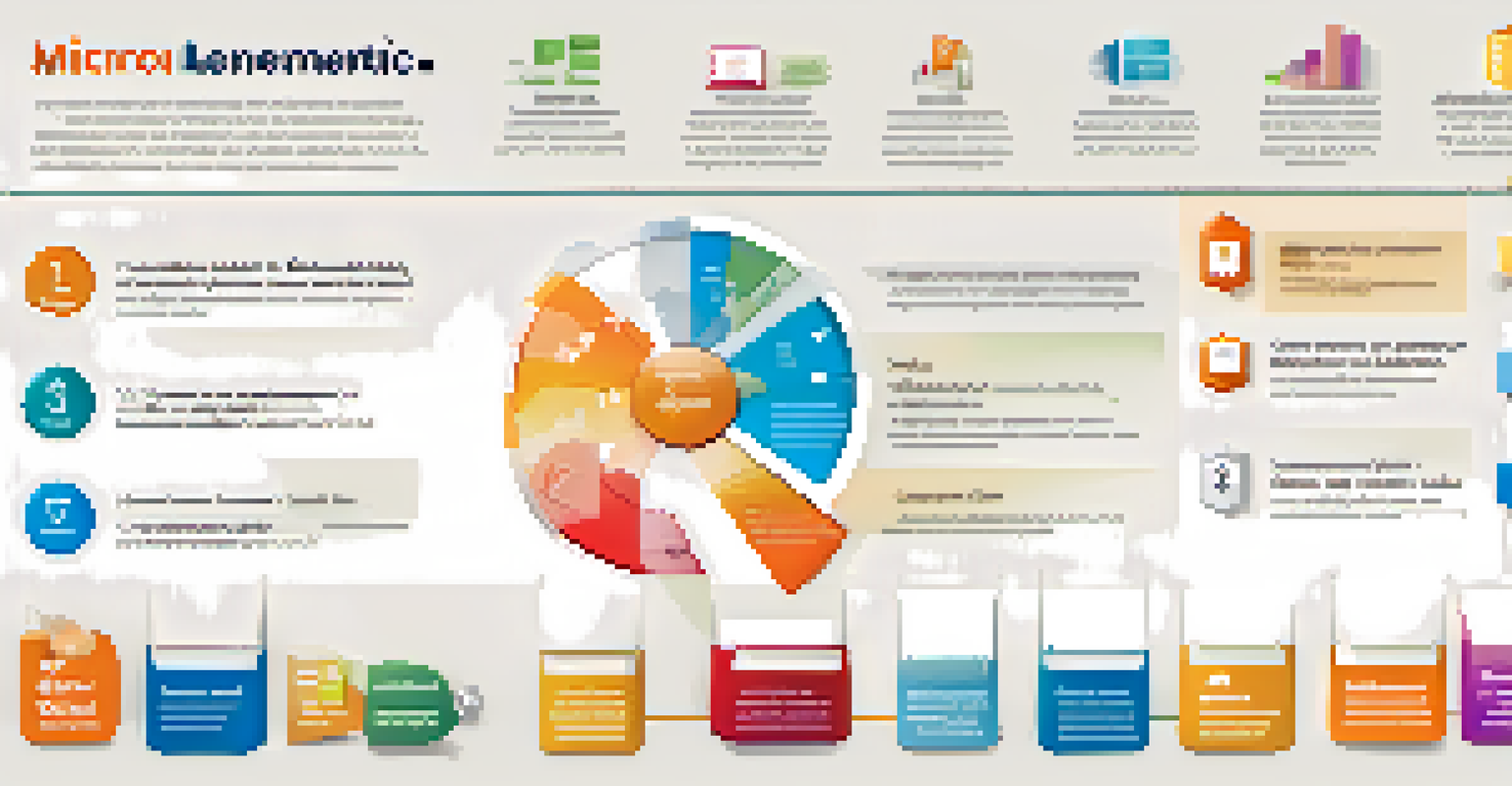Evaluating the Effectiveness of Microlearning Programs

Understanding Microlearning and Its Benefits
Microlearning is an educational approach that delivers content in bite-sized pieces, making learning more digestible. This method has gained traction in recent years, primarily due to its alignment with our fast-paced lifestyles. By focusing on specific topics, microlearning can enhance information retention and engagement, catering to the needs of busy professionals.
Microlearning is not just a trend; it’s a fundamental shift in how we approach learning in the workplace.
Think of microlearning like snacking rather than a full-course meal; it allows learners to consume knowledge in manageable portions, preventing overwhelm. This approach is particularly effective in corporate training, where employees can quickly access information relevant to their tasks without sifting through lengthy materials. As a result, organizations can see increased productivity and higher satisfaction rates among their teams.
However, to harness the full potential of microlearning, evaluating its effectiveness becomes essential. Identifying how well these programs meet learning objectives can lead to improved content and delivery methods, ensuring that the initiative is not just a trend but a sustainable practice.
Key Metrics for Evaluating Microlearning Programs
When assessing microlearning effectiveness, it's crucial to focus on key metrics such as engagement, retention, and application. Engagement can be measured through completion rates and user feedback, giving insights into how learners interact with the content. Understanding how often employees return to these resources can also highlight their relevance and usefulness.

Retention is another critical metric, often assessed through quizzes or assessments that gauge knowledge retention over time. For example, if learners consistently perform well in follow-up tests, it indicates that the microlearning content is sticking. On the other hand, if scores are low, it may signal a need for content revision.
Microlearning Enhances Retention
By delivering content in bite-sized pieces, microlearning significantly improves information retention and engagement for busy professionals.
Finally, evaluating the application of knowledge in real-world scenarios is vital. This could involve observing changes in job performance or gathering feedback from managers to see if employees are utilizing the skills learned. A successful microlearning program should lead to measurable improvements in workplace performance.
Feedback Mechanisms for Continuous Improvement
Feedback is the backbone of any effective learning program, and microlearning is no exception. Implementing feedback mechanisms—such as surveys or user reviews—can provide valuable insights into what works and what doesn't. Encouraging learners to share their thoughts can also foster a culture of continuous improvement.
Feedback is the cornerstone of effective learning and growth.
For instance, after completing a module, learners could be prompted to rate their experience and suggest enhancements. This not only empowers them but also helps instructional designers refine content based on real user experiences. Listening to the audience is key to creating relevant and effective microlearning resources.
Moreover, analyzing feedback trends over time can reveal patterns that inform larger training strategies. If a specific topic consistently receives low ratings, it may warrant a complete overhaul or additional resources to clarify the content.
Aligning Microlearning with Business Goals
To truly evaluate the effectiveness of microlearning, it must align with broader business goals. This means understanding how the knowledge gained through microlearning contributes to company objectives, whether that’s improving sales, enhancing customer service, or fostering innovation. When learning initiatives are linked to tangible outcomes, their impact becomes clearer.
Consider a sales team that undergoes microlearning training on customer interaction techniques. If the program is designed to improve sales conversion rates, tracking performance changes post-training can illustrate its effectiveness. This alignment ensures that learning is not just an isolated activity but part of a larger strategy.
Key Metrics for Success
Assessing microlearning programs requires focusing on engagement, retention, and real-world application to ensure effective learning outcomes.
Furthermore, communicating these connections to all stakeholders can enhance buy-in and support for microlearning initiatives. When employees see how their learning efforts directly contribute to success, they are more likely to engage fully with the programs.
Utilizing Technology for Effective Evaluation
In today’s digital age, leveraging technology can streamline the evaluation of microlearning programs. Learning Management Systems (LMS) offer robust tools for tracking user interactions, completion rates, and test scores, making it easier to gather data. These platforms can automate much of the evaluation process, saving time and resources.
Moreover, advanced analytics can provide deeper insights into learner behavior and preferences. By analyzing data trends, organizations can identify which topics resonate most with employees and which areas may need more focus. This data-driven approach ensures that decisions are based on facts rather than assumptions.
Additionally, technologies like artificial intelligence can personalize learning experiences, adapting content to meet individual learner needs. This level of customization not only enhances engagement but also provides a richer dataset for evaluating effectiveness over time.
Case Studies: Success Stories and Lessons Learned
Examining case studies of successful microlearning implementations can offer valuable lessons for evaluation. Organizations often share their experiences, detailing how they structured their programs and the metrics they used to measure success. These real-world examples can serve as inspiration and guidance for others looking to adopt similar approaches.
For instance, a well-known tech company revamped its onboarding process with microlearning modules that targeted specific job functions. By measuring employee performance before and after the training, they discovered significant improvements in competency and confidence. Such case studies highlight the tangible benefits of effective microlearning evaluation.
Align Learning with Business Goals
Linking microlearning initiatives to broader business objectives helps demonstrate their impact and boosts employee engagement.
However, not all stories are success tales; learning from failures is equally important. By analyzing what went wrong in unsuccessful programs, organizations can adjust their strategies and avoid making the same mistakes, ultimately leading to more effective microlearning initiatives.
The Future of Microlearning Evaluation
As microlearning continues to evolve, so will the methods for evaluating its effectiveness. The future may see more integration of immersive technologies, such as virtual reality (VR) and augmented reality (AR), which can provide interactive learning experiences. Evaluating the impact of these innovative tools will require new metrics and approaches.
Moreover, as artificial intelligence becomes more prevalent in education, it could offer personalized learning paths and instant feedback, changing how we evaluate success. This shift will require organizations to adapt their evaluation frameworks to keep pace with technological advancements.

Ultimately, the goal of microlearning evaluation remains the same: to ensure that learning is effective, engaging, and aligned with organizational objectives. By staying ahead of trends and continuously refining evaluation methods, companies can maximize the benefits of microlearning programs.